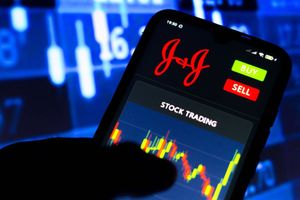Fastest growing type of cybercrime is expected to attack a business, consumer, or device every 2 seconds by 2031
Ransomware is expected to attack a business, consumer, or device every 2 seconds by 2031”
SAUSALITO, CALIF., USA, June 4, 2021 /EINPresswire.com/ -- A 2017 report from Cybersecurity Ventures predicted ransomware damages would cost the world $5 billion (USD) in 2017, up from $325 million in 2015 — a 15X increase in just two years. The damages for 2018 were predicted to reach $8 billion, for 2019 the figure was $11.5 billion, and in 2021 it’s $20 billion — which is 57X more than it was in 2015.— Steve Morgan, Founder of Cybersecurity Ventures
Despite authorities’ recent success in busting several ransomware gangs, this particular breed of malware has proven to be a hydra — cut off one head and several appear in its place — and all signs are that the coming decade will be no less problematic.
Painting a portrait of ransomware over the next decade, then, requires extrapolating from the figures that are currently available, charting the impact of increasingly capable ransomware extortionists, and expecting that things will get much worse before they get better — assuming that they ever can.
Ransomware will cost its victims around $265 billion (USD) annually by 2031, Cybersecurity Ventures predicts, with a new attack every 2 seconds as ransomware perpetrators progressively refine their malware payloads and related extortion activities. The dollar figure is based on 30 percent year-over-year growth in damage costs over the next 10 years.
The prevalence of IoT devices has opened up worrying new avenues for ransomware attackers, who can easily adapt their malware to particular industrial sensors, healthcare monitors or dosage devices, or self-driving cars.
Even drones themselves, which are fast becoming the core of new aerial distribution networks, are likely to be targeted in ransomware attacks in which non-payment could see the devices dropping from the skies.
With smart-city initiatives rapidly taking hold and likely to be ubiquitous by 2031, almost every device around you will be potentially susceptible to compromise: think ransomware criminals demanding payment to avoid shutting off key road safety signs or public lighting, and you’ve got an idea of the risks that city security managers will be fighting every day by then.
While both commendable and necessary, efforts to fight ransomware by finding and closing code loopholes will continue to be a challenge over the next decade. Automated code-scanning tools offer some assistance, but much of today’s vulnerability detection still requires human ingenuity.
While ransomware authors will continue to tweak the structure and methodologies used by their malicious code, over the next decade it’s likely that ransomware will take on a completely new role as a cyber weapon used within a continuously shifting geopolitical climate.
“Ransomware is the fastest-growing cybercrime for a reason,” says Steve Morgan, founder at Cybersecurity Ventures and editor-in-chief at Cybercrime Magazine. “It’s the proverbial get-rich-quick scheme in the minds of hackers.”
Cybersecurity Ventures states that ransomware costs include ransom payouts, damage and destruction (or loss) of data, downtime, lost productivity, post-attack disruption to the normal course of business, forensic investigation, restoration and deletion of hostage data and systems, reputational harm, and employee training in direct response to the ransomware attacks.
“We hold out hope our prediction will be wrong,” adds Morgan. “For that to happen, consumers and organizations will need to stop paying ransoms — which unfortunately is easier said than done. There also needs to be massive education of employees at businesses of all sizes globally. We may even see a push to ban cryptocurrency if society believes it does more harm than good.”
Malcomb Farber
Cybersecurity Ventures
email us here
Visit us on social media:
Twitter
LinkedIn







